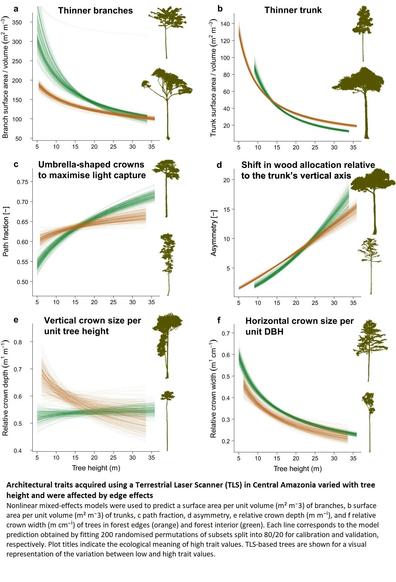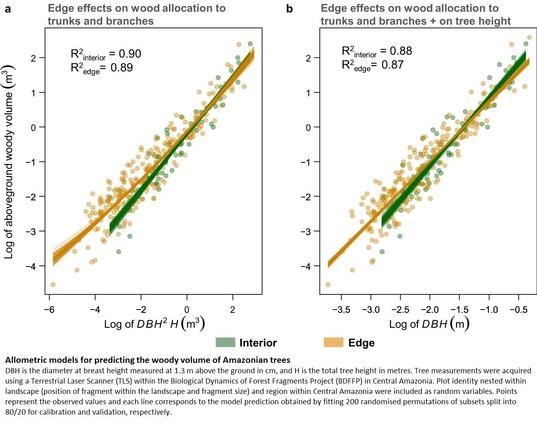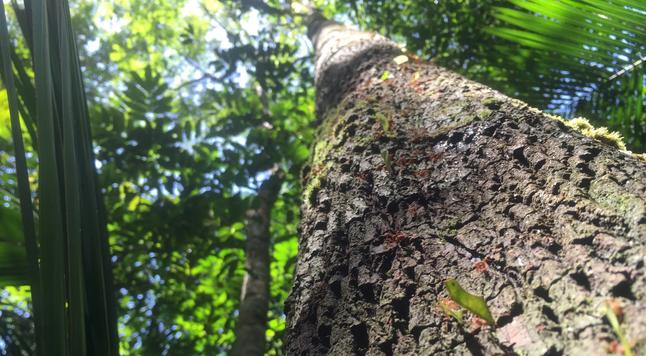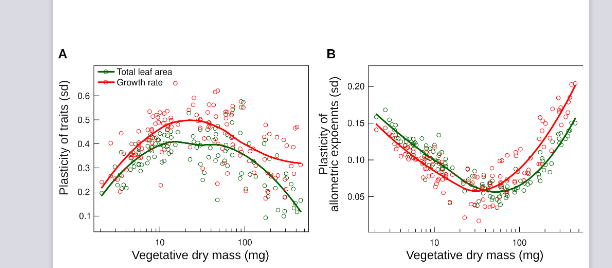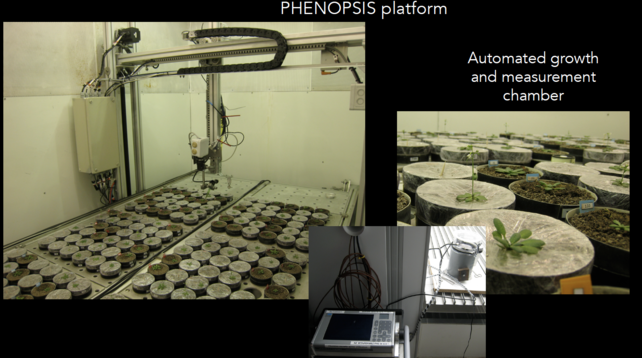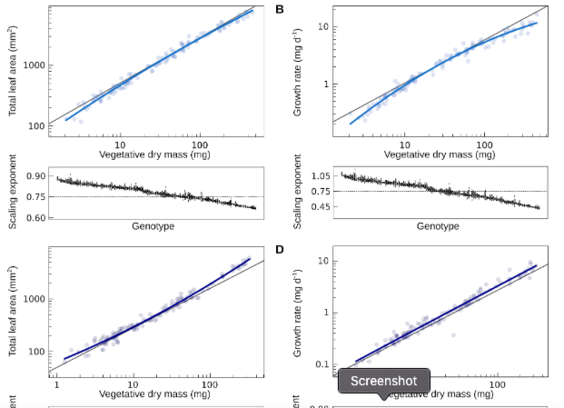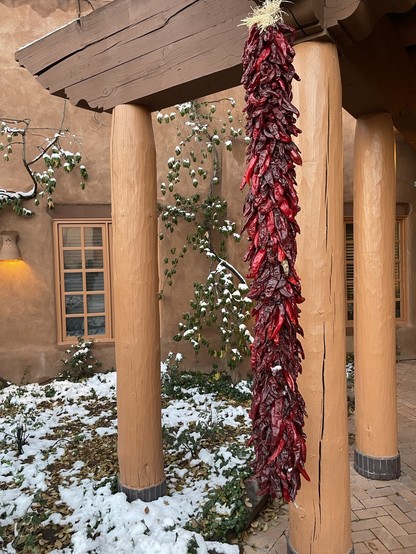Happy to see out our latest work on studying animal body size variations using single cell transcriptomics to measure gene expression of individual cells. Learned my fair bit of statistics here, and most importantly I learned how to build wrapper functions for "complex" tasks in R (such as differntial gene expression) in a modular way. Thanks to all the authors involved! https://www.science.org/doi/10.1126/sciadv.adm7042 #singlecell #scrna #allometry #splitseq #planarians #generegulation
#allometry
#30DayChartChallenge Día 17: Birds! 🐦 Hoy toca explorar relaciones en el mundo aviar con el increíble dataset AVONET. #RelationshipsWeek #Animals
Graficamos la Longitud del Ala vs. Masa Corporal (log-log) para >9500 especies. ¡Una relación clave en la biomecánica del vuelo! ✈️
Lo interesante:
1️⃣ Facetas por Hábitat: Vemos cómo la relación cambia (o no) entre Bosque, Marino, Pradera, etc. ¡La ecología importa!
2️⃣ Color por Orden: Los puntos coloreados muestran la diversidad taxonómica (12 órdenes principales). Passeriformes por todas partes!
Una visualización "complicada" (Día 15 😉) que revela la interacción entre tamaño, forma del ala, linaje evolutivo y ambiente.
🛠 #rstats #ggplot2 #readxl #data_table | Data: AVONET (Tobias et al. 2022) | Theme: #theme_week3_animals
📂 Código/Viz: https://t.ly/iEHPE
#Day17 #Birds #dataviz #DataVisualization #Ecology #Ornithology #Morphology #Allometry #AVONET #ggplot2 #RStats
Eagles, butterflies, and whales don’t appear to have much in common, but a new study shows that they — along with over 400 other flying and swimming animals of all sizes — flap with a frequency determined by a simple equation. Their beat frequency is proportional to the square root of their mass divided by their wing area. As you can see in the graph below, this scaling collapses pretty much all of the data onto a single line:
Illustration of the predicted relationship between size and wing frequency (black line) shown alongside various insects, birds, bats, penguins, and whales. The swimming animals also fall on the line, once adjustments are made for the difference in density between air and water.It’s surprising to find such a consistent relationship among animals of such vastly different sizes and types. The next big question for researchers will be unpicking exactly why and how animals evolved to use such a consistent pattern between their size and their wing(/fin) frequency. (Image credit: top – E. Ward, graph – J. Jensen et al.; research credit: J. Jensen et al.; via Physics World)
https://fyfluiddynamics.com/2024/06/universal-wingbeats/
#allometry #biology #fluidDynamics #flying #mathematics #physics #science #swimming
Happy to share a new paper - "#scaling approaches and #macroecology provide a foundation for assessing ecological #resilience in the #anthropocene We advocate moving beyond qualitative resilience metaphors toward a more quantitative macroecological framework https://royalsocietypublishing.org/doi/10.1098/rstb.2023.0010 #biodiversity #allometry
Forest Fragmentation Is Changing The Shape Of Amazonian Trees, Finds Study [remotesensing]
--
https://phys.org/news/2023-12-forest-fragmentation-amazonian-trees.html <-- shared technical article
--
https://doi.org/10.1038/s41467-023-44004-5 <-- shared paper
--
#GIS #spatial #mapping #amazonia #amazon #amazonrainforest #brazil #remotesensing #LiDAR #terrestrial #terrestriallaser #forestry #lossofhabitat #clearing #trees #vegetation #harvesting #model #modeling #canopy #tree #treecanopy #deforested #tropicalrainforest #tropical #rainforest #forestedge #treeshape #light #sunlight #biomass #ecosystem #treehealth #fragmentedforest #model #survey #habitatfragmentation #treearchitecture #allometry #forestconservation #foresthealth #CentralAmazonia #edgeeffects #carbonsequestration #climatechange
Idiosyncratic #paleontology paper of the week for #fossilfriday: making predictions for what we might see in #fossil #turtles as species got smaller over time.
Are diminutive turtles miniaturized? The ontogeny of plastron shape in emydine turtles
Kenneth D. Angielczyk, Chris R. Feldman
Biological Journal of the Linnean Society, Volume 108, Issue 4, April 2013, Pages 727–755, https://doi.org/10.1111/bij.12010
#paleobiology #allometry #evolution
A new COADS #publication is now available online. Dr. Shott and colleagues examine the life history of Early Archaic Kirk points with the application of #geometricmorphometric analysis of 2D images from private collections in Central Ohio. #archaeology #publicationday #allometry #LearnWorkDiscover #NSFfunded #ChertChert
https://link.springer.com/article/10.1007/s10816-023-09612-x
Our study supports the central assumptions of #MST and highlights the role of allometric models to understand the #physiological responses involved in #plant #adaptation. #Allometry is more variable between genotypes than between environments. Suggesting that natural selection can lead to the genetic differentiation of plant allometries in different environments, but that environmental changes have limited effect on a genetically-determined type of allometry.
Using the #PHENOPSIS platform to automate measuring and testing #genotypes - Our study suggests that plant #allometry is genetically variable and might be related to different adaptive strategies to cope with stressing conditions.
Check out our new paper - Genetic variability and plasticity of plant allometry" led by François Vasseur - across 120 genotypes intraspecific #allometry adhered to predictions from #MetabolicScalingTheory https://besjournals.onlinelibrary.wiley.com/doi/10.1111/1365-2435.14281 1/n ...
I just asked #ChatGPT to give me some scaling and #allometry #haiku … Not bad
Scaling in biology,
Allometry and dimensional,
Space and time we scale.
From physiology,
To ecosystems and evolution,
Scaling laws we learn.
Scaling laws revealed,
From body size to species diversity,
Biology expands.
1/2
Early snowfall, #SantaFe #NewMexico Getting ready for start of #Scaling In Biology symposium and working group @SFIScience #SantaFeInstitute #Allometry
Adaptive function of #narwhal tusk: hyperallometric scaling suggests that tusk length is an exaggerated trait under sexual selection. #science #biology #evolution #mammal #allometry #animalbehaviour #weapon
📄 Graham et al. (2020) The longer the better: evidence that narwhal tusks are sexually selected. Biology Letters 16:20190950 http://dx.doi.org/10.1098/rsbl.2019.0950
![Gráfico facetado en 6 paneles (por tipo de hábitat: Bosque, Bosque arbolado, Humedal, Marino, Matorral, Pradera) que muestra la relación entre Log10(Longitud del Ala [cm]) en el eje Y y Log10(Masa Corporal [g]) en el eje X para más de 9500 especies de aves. Los puntos en cada scatter plot están coloreados según el Orden taxonómico (12 órdenes representados en la leyenda). Se observa una tendencia general positiva en todos los paneles, con variaciones en la dispersión y posición de los puntos según el hábitat y el orden. El gráfico usa un tema con fondo beige claro. Fuente: AVONET dataset (Tobias et al. 2022).](https://files.mastodon.social/cache/media_attachments/files/114/352/301/174/194/861/small/ac1d5aebf4c285c9.png)
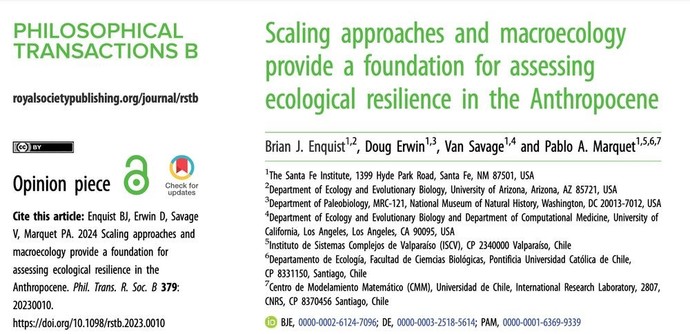
![graphic - cross section - Point cloud of trees growing in fragmented forests in Central Amazonia, obtained using high-resolution terrestrial laser scanning (TLS) - The quantification of architectural attributes of tropical trees is challenging and has been largely overlooked. TLS offers new perspectives into the three-dimensional (3D) structure of trees, including descriptions of fine-scale architectural traits such as tree asymmetry and vertical distribution of branches. Here, [they] investigate how the architecture of surviving and young colonising trees change with proximity to forest edges. [They] used TLS data that resulted in a point spacing of 1.4 cm at a 20 m distance from the scanner.](https://files.mastodon.social/cache/media_attachments/files/111/610/451/828/388/410/small/fbfd8ef0fea273c1.jpg)
